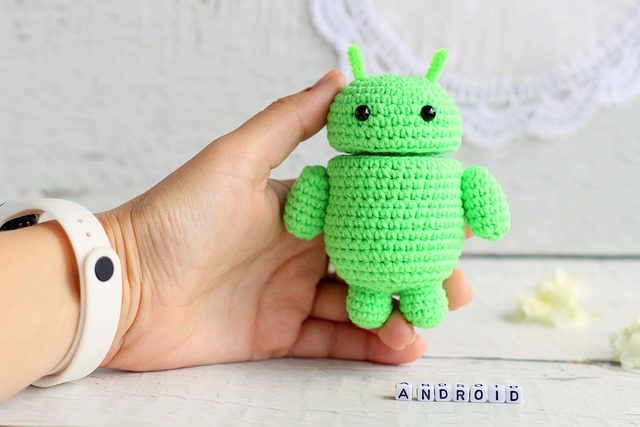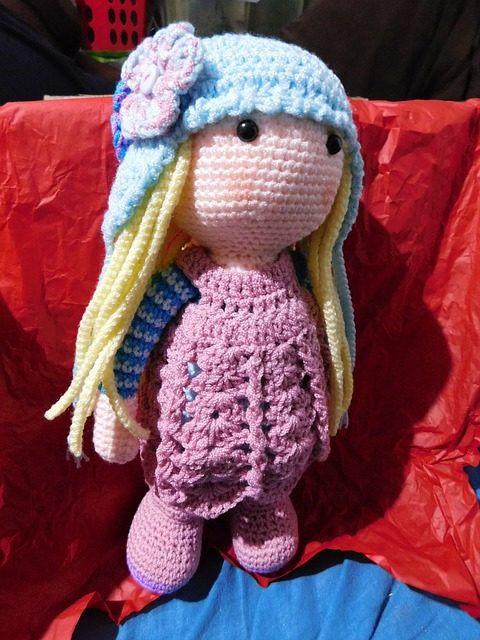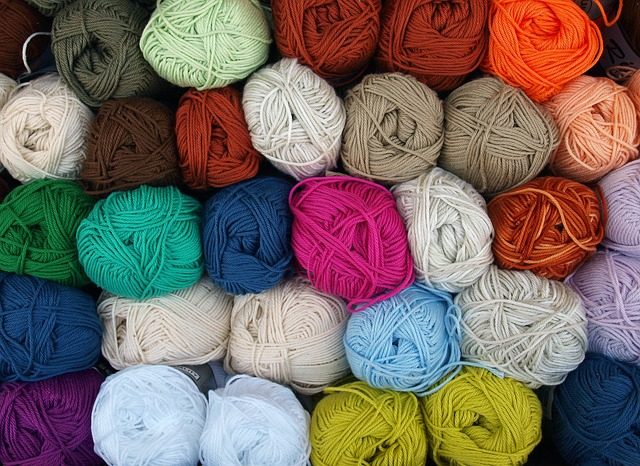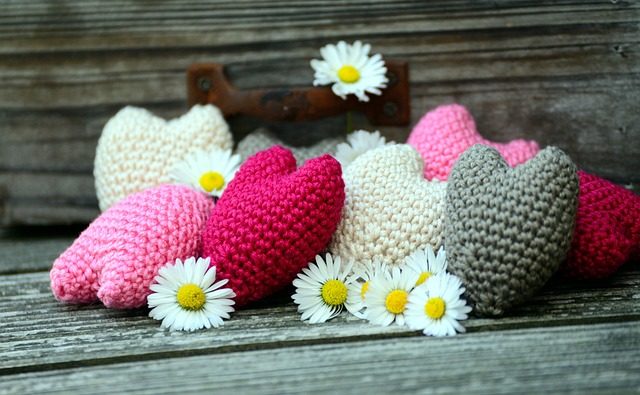Welcome to the world of amigurumi crochet, where the cutest and most creative plushies come to life! In this blog post, we’ll be exploring over 50 fabulous free amigurumi patterns perfect for beginners. So grab your crochet hook and let’s dive into this enchanting universe of adorable animals, charming objects, and delightful food items.
Table of Contents
Short Summary
Explore the exciting world of amigurumi crochet and unleash your creativity with endless possibilities!
Learn essential techniques, stitches & supplies to create beautiful projects.
Get ready for 50+ free beginner patterns – animals, objects & food items – plus tips on reading patterns, assembly & troubleshooting!
Getting Started with Amigurumi Crochet

Amigurumi crochet is an exciting craft that originated in Japan and now has captured the hearts of crochet enthusiasts worldwide. The term “amigurumi” is derived from the Japanese words “ami,” meaning crocheted or knitted, and “nuigurumi,” meaning stuffed doll. It refers to a type of small, soft crocheted or knitted stuffed toy. The beauty of amigurumi lies in its simplicity, versatility, and endless possibilities for creativity. With just a few basic techniques and stitches, you can create a wide array of cute and imaginative objects.
From little amigurumi cat plushies to unique home decorations, the sky’s the limit with amigurumi! And the best part? There are countless free crochet patterns available online, making it easy for absolute beginners to start their crochet journey.
What is Amigurumi?
Amigurumi is a Japanese art form that involves crocheting or knitting small stuffed animals, dolls, and other delightful creations. These charming characters have captured the hearts of millions worldwide. The versatility of amigurumi means you can make your plushies as big or as small as you’d like, from an amigurumi cat to a cute little bunny. With a vast array of free amigurumi patterns available online, there’s no shortage of inspiration for your next project.
Although amigurumi finds its roots in Japan, it has gained popularity in the US and around the globe since the early 2000s. Today, amigurumi enthusiasts share their creations through social media, blogs, and online forums, creating a vibrant and supportive community for all skill levels. Whether you’re a seasoned crocheter or just starting, amigurumi offers an exciting and creative way to expand your crochet horizons.
Why Choose Amigurumi?
Amigurumi is an excellent choice for beginners who want to dive into the world of crochet. Its simplicity, versatility, and availability of free patterns make it an attractive and accessible option for those new to the craft. With just a few basic stitches like single crochet, thrilling increases, and dramatic decreases, you can create an endless variety of cute and creative objects. And as you gain confidence and experience, you can experiment with more complex patterns and techniques to expand your amigurumi repertoire.
Another advantage of choosing amigurumi as a beginner project is the wealth of resources and tutorials available online. From step-by-step video tutorials to helpful blog articles, there’s an abundance of guidance to help you on your amigurumi journey. And as you progress, you’ll discover a warm and welcoming community of fellow amigurumi enthusiasts who share their creations, tips, and support through online forums and social media platforms.
So, whether you’re looking for a new hobby or a creative outlet, amigurumi crochet offers endless possibilities to learn, grow, and connect with others.
Essential Techniques and Stitches for Amigurumi

Mastering a few essential techniques and stitches will set you on the path to amigurumi success. The magical magic circle, basic stitches such as single crochet, and increasing and decreasing are the building blocks of amigurumi crochet.
In the following sections, we’ll delve deeper into these techniques and provide helpful tips and tricks to ensure your amigurumi projects come to life with ease and precision.
Magic Circle
The magic circle, also known as the adjustable ring or magic loop, is a popular starting method for amigurumi projects. This exciting technique allows you to begin your crochet project right at its center, providing a tight and secure starting point. It’s especially useful for creating round shapes commonly found in amigurumi patterns.
To create a magic circle, follow these steps:
Cross the free end of the yarn over the trailing end.
Place your index and middle finger through the loop.
Reach for the opposite yarn and pinch it across.
Flip the yarn strands on your left hand.
Yarn over the hook.
Pull through the loop to form a chain 1.
Now you can begin single crocheting into the center of the loop.
Once you’ve completed the required number of stitches, gently pull the free end of the yarn to close the circle.
Voila! You’ve successfully created a magic circle.
Practice this technique with a few simple patterns, and you’ll be on your way to mastering amigurumi crochet.
Basic Stitches
While there are many stitches used in crochet, the basic stitches you’ll encounter most frequently in amigurumi are single crochet, half double crochet, and double crochet. The most common stitch in amigurumi is undoubtedly the single crochet stitch, as it creates a tight fabric that keeps stuffing from popping out. However, don’t be surprised if you come across patterns that incorporate other thrilling stitches like half double crochet (hdc), double crochet (dc), or even a dynamic combination of all these stitches.
As you practice these basic stitches, it’s essential to maintain consistent tension throughout your work. This will ensure that your amigurumi projects have an even appearance and that the stuffing remains securely inside the plushie. With time and practice, you’ll become more comfortable and confident with these essential stitches, allowing you to tackle more complex amigurumi projects.
Increasing and Decreasing
To create the various shapes and sizes found in amigurumi projects, it’s essential to understand increasing and decreasing stitches. Increasing involves single crocheting twice in the same stitch to widen the round. On the other hand, decreasing involves combining two consecutive single crochet stitches together to make the round narrower.
To close a hole in amigurumi, follow these steps:
Continue decreasing the amigurumi until the round narrows.
Use a darning needle to insert it inside all the front loops of the last round.
Pull the base closed.
As you practice these techniques, you’ll gain a better understanding of how to shape your amigurumi projects and achieve the desired effect.
Must-Have Supplies for Amigurumi Crochet

Before embarking on your amigurumi journey, it’s crucial to gather the must-have supplies, including the right yarn, essential tools like a crochet hook, and additional accessories such as safety eyes and stuffing.
In the next sections, we’ll discuss how to choose the best yarn and tools for your amigurumi projects and explore some helpful accessories that will elevate your creations.
Choosing the Right Yarn
Selecting the right yarn for your amigurumi project can make all the difference in the final result. Acrylic, cotton, and cotton blends are popular choices for amigurumi, as they are affordable, durable, and widely available. When choosing yarn for your project, consider the desired texture, weight, and appearance of your finished amigurumi. Cotton yarn in either DK or worsted weight is often recommended for making amigurumi animals, as it provides a smooth finish and great stitch definition.
To ensure the best results, it’s essential to refer to the pattern when choosing yarn for your amigurumi project. The pattern will list:
the weight or specific yarn used, which can help you choose a similar yarn
the recommended hook size
any special notes or instructions provided by the designer
These tips can guide you in selecting the perfect yarn for your amigurumi masterpiece.
Essential Tools
In addition to choosing the right yarn, having the proper tools on hand is essential for successful amigurumi crochet. A crochet hook, darning needle, and stitch markers are must-haves for any amigurumi project. The size of the crochet hook you’ll need depends on the yarn you’re using and the desired tightness of your stitches. It’s generally recommended to use a smaller hook for amigurumi to ensure there are no gaps in the finished pieces.
Scissors, measuring tape, and safety pins (stitch markers) are additional tools that will come in handy when working on your amigurumi projects. These tools can help you accurately measure and cut your yarn, keep track of your rounds, and ensure your stitches are even and consistent. Investing in quality tools will make your amigurumi crochet experience more enjoyable and efficient.
Additional Accessories
To add personality and charm to your amigurumi creations, you’ll need some additional accessories. Safety eyes are a popular option for amigurumi eyes, as they provide a secure and professional finish. Stuffing materials, such as polyester fiberfill, cotton, wool, or bamboo, give your amigurumi projects a soft, plush feel.
Embroidery floss is perfect for adding facial features or other decorative details to your plushies. By incorporating these accessories into your projects, you’ll elevate your amigurumi creations to new levels of cuteness and charm.
Top 50+ Free Amigurumi Patterns for Beginners

Now that you’re equipped with the knowledge and tools to start your amigurumi journey, it’s time to explore our handpicked selection of over 50 free amigurumi patterns perfect for beginners. From adorable animals to charming objects and delightful food items, there’s a free amigurumi pattern to suit every taste and interest.
So let’s dive in and discover the endless possibilities that await you in the world of amigurumi crochet!
Adorable Animals
Our collection of beginner-friendly amigurumi animal patterns features a wide range of cute critters and simple shapes that are perfect for honing your crochet skills. From Cleo the Crochet Clam to the Itty Bitty Penguin, these patterns offer step-by-step instructions and helpful tips to guide you through the process of creating your very own amigurumi menagerie.
Some patterns, like the Rectangle Bunny, are designed with absolute beginners in mind, using basic shapes and minimal sewing to create adorable plushies with ease. Other patterns, like the No-Sew Whale, provide a more advanced challenge for those looking to expand their amigurumi skills.
With so many delightful animals to choose from, you’ll have endless fun exploring the world of amigurumi crochet.
Charming Objects
Amigurumi isn’t limited to just cute animals – you can also create charming objects that make perfect home decor pieces or unique gifts. From a Crochet Wine Glass to a Cactus Amigurumi, these patterns offer a creative twist on traditional crochet projects.
Many of these amigurumi pattern designs are created with beginners in mind, using simple shapes and easy-to-follow instructions to ensure a smooth and enjoyable crafting experience. As you progress in your amigurumi journey, you can experiment with more complex patterns and techniques to create a wide array of charming objects that showcase your creativity and skill.
Delightful Food Items
Food-themed amigurumi patterns are a fun and playful way to explore the world of crochet. From a Birthday Cupcake with Candle to a Hot Dog with Mustard Soft Toy, these delightful food items offer a creative and appetizing twist on traditional amigurumi projects. Designed with beginners in mind, many of these patterns feature simple shapes and minimal sewing, making them perfect for those new to amigurumi crochet.
As you gain experience and confidence in your crochet skills, you can tackle more advanced patterns, like the Squishy Kawaii Raindrop or the Bear Lovey Blanket. The possibilities are endless and deliciously fun, including creating adorable crochet plushies with a free crochet pattern!
Amigurumi Crochet Tips for Beginners
As you embark on your amigurumi crochet journey, it’s essential to arm yourself with helpful tips and tricks to ensure a smooth and enjoyable crafting experience. In the following sections, we’ll cover essential advice for reading patterns, assembling your creations, and troubleshooting common issues that may arise during your amigurumi projects.
Reading patterns is the first step in any amigurumi project. It’s not.
Reading Patterns
Understanding and reading amigurumi patterns is a crucial skill for any aspiring amigurumi crocheter. Amigurumi patterns typically include a list of materials, step-by-step instructions, and stitch counts to guide you through the process of creating your plushie. Familiarize yourself with common abbreviations, such as sc (single crochet), inc (increase), dec (decrease), and ch (chain), to help you accurately interpret the pattern.
Before beginning your project, read through the entire pattern to ensure you understand all the instructions and special notes provided by the designer. These notes may include helpful tips, stitch counts, or alternative techniques that will enhance your amigurumi experience. As you work through the pattern, check your stitch count regularly to ensure accuracy and maintain consistent tension throughout your work.
Assembly and Finishing Touches
Once you’ve completed crocheting the individual pieces of your amigurumi project, it’s time to assemble and add finishing touches. Sewing pieces together can be done using various techniques, such as the whipstitch or mattress stitch. The whipstitch involves overlapping the two pieces together with visible seams, while the mattress stitch strings the yarn through one piece and into the other with hidden seams.
Adding embellishments to your amigurumi projects can bring them to life and add personality. Some options for embellishments include:
Buttons
Beads
Sequins
Other decorative items
Incorporating these elements into your creations can enhance their charm and appeal. With a little creativity and attention to detail, you can elevate your amigurumi projects to new heights of cuteness and style.
Troubleshooting Common Issues
As with any craft, you may encounter some common issues during your amigurumi crochet journey. Uneven stitches and gaps in the fabric are two challenges that can be addressed with some simple troubleshooting. To address uneven stitches, check your tension and ensure you are using the same size hook and yarn throughout the project. Maintaining consistent tension will help create an even appearance and prevent stuffing from popping out. By paying close attention to a few stitches, you can greatly improve the overall quality of your amigurumi.
Gaps in the fabric can also be attributed to inconsistent tension or skipped stitches. Double-check your work to ensure you have not missed any stitches and maintain even tension throughout your project. With practice and patience, you’ll become more adept at troubleshooting common issues and creating flawless amigurumi projects.
Online Resources and Tutorials for Amigurumi Crochet
The world of amigurumi crochet is vast, and there are an abundance of online resources and tutorials available to help you learn and master this craft. From step-by-step video tutorials to helpful blog articles, you’ll find a wealth of guidance and support to enhance your amigurumi skills.
Popular websites like www.sweetsofties.com offer video tutorials for beginners, while blogs and community forums such as Ravelry, Amigurumi Today, and Amigurumi Free Patterns provide patterns, tips, and inspiration from fellow amigurumi enthusiasts. By exploring these resources and connecting with the amigurumi community, you’ll gain valuable knowledge, skills, and support on your crochet journey.
For more info, visit Resources for learning how to crochet amigurumi
Summary
In conclusion, amigurumi crochet offers a fun and creative outlet for crafters of all skill levels. With countless free patterns, helpful resources, and a supportive community, there’s never been a better time to dive into the world of amigurumi. So grab your crochet hook, gather your supplies, and embark on a journey filled with adorable animals, charming objects, and delightful food items. Happy crocheting!
Frequently Asked Questions
What’s the difference between crochet and amigurumi?
Amigurumi is a type of crochet that involves making 3D toys by working in the round and stuffing cute little animals – so it’s like crocheting on steroids!
It’s a great way to make unique gifts for friends and family, or just to have fun and make something cute for yourself.
Can a beginner crochet amigurumi?
Amigurumi are fun, quick and portable projects that even beginners can make! So go ahead and try out one of these 25 beginner-friendly crochet animal patterns to get started.
Should I learn crochet before amigurumi?
Yes, you should definitely learn how to crochet before attempting amigurumi – it’ll make it much easier to pick up your first project!
Follow a video tutorial that has a pattern included to help you learn the stitches and read patterns all at once.
What materials do I need to start amigurumi crochet?
Get ready to start your amigurumi crochet journey! You’ll need yarn, a crochet hook, stitch markers, darning needles, scissors, and a beginner-friendly pattern with detailed instructions – everything you need to get creating!
With the right supplies, you can start crocheting amigurumi in no time. Choose a pattern that is suitable for your skill level.
What are the essential techniques and stitches for amigurumi?
The basics of amigurumi include the magic circle, single crochet, and increasing and decreasing – all essential techniques and stitches for creating these fun crocheted figures!









